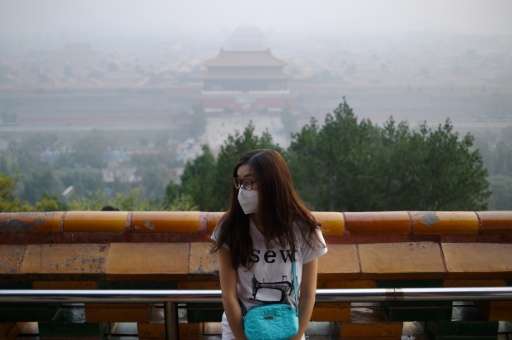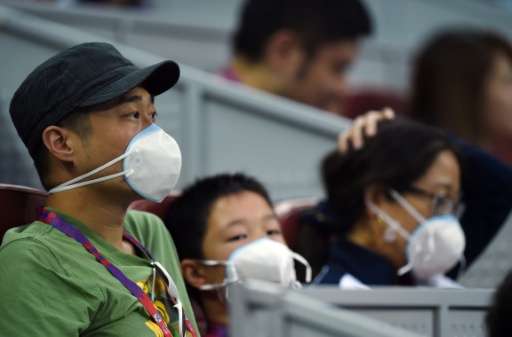Heavy air pollution in 80% of Chinese cities: Greenpeace

Pollution in nearly 80 percent of Chinese cities surveyed by Greenpeace "greatly exceeded" national standards over the first nine months of this year, the advocacy group said on Thursday.
The average level of PM2.5 particulates—small enough to deeply penetrate the lungs—in the 367 cities tested was also more than four times the maximum recommended by the World Health Organization (WHO), Greenpeace said.
Nearly 80 percent of the cities exceeded the national standard on PM2.5, which is significantly less strict than the WHO benchmark, despite an overall improvement from the same period last year.
Widespread use of coal for power generation and emissions from heavy industry regularly swathe Chinese cities in smog, linked to hundreds of thousands of premature deaths each year.
It is a major source of discontent with the ruling Communist party, who have announced measures such as moving power plants, but few expect rapid improvements.
Greenpeace said that average pollution levels were about 10 percent lower than the same period last year.
"Although we're seeing gradual improvement, air pollution levels are still unhealthy and unsafe," said Greenpeace East Asia Climate and Energy Campaigner Dong Liansai.
The most polluted cities were Kashgar and Hotan in China's northwestern Xinjiang region, and the northern industrial hub of Baoding.
Average PM2.5 readings across the surveyed cities was 47.2 micrograms per cubic metre. The WHO maximum for annual average exposure is 10 while China's annual standard is 35.

Beijing's average over the nine months was 72.1 while Shanghai's was 50.4.
China's capital ranked as one of the most polluted cities, despite factory closures to ensure blue skies for a massive military parade last month.
Locals dubbed the reprieve "parade blue" but Greenpeace said such short-term interventions had a "negligible effect on overall long term air quality".
"Rather than temporary measures, we need a long term strategy and systemic change to China's energy structure," Dong added.
Greenpeace called for a cap on coal use to be included in China's new five-year economic plan, currently being drafted by the ruling Communist party.
"A cap on coal consumption is critical for reducing air pollution and bringing back healthy, breathable air to our cities," Dong said.
Last week a player at the China Open tennis tournament held in Beijing in thick haze said pollution had made him vomit, while fans wore face masks.
© 2015 AFP

















